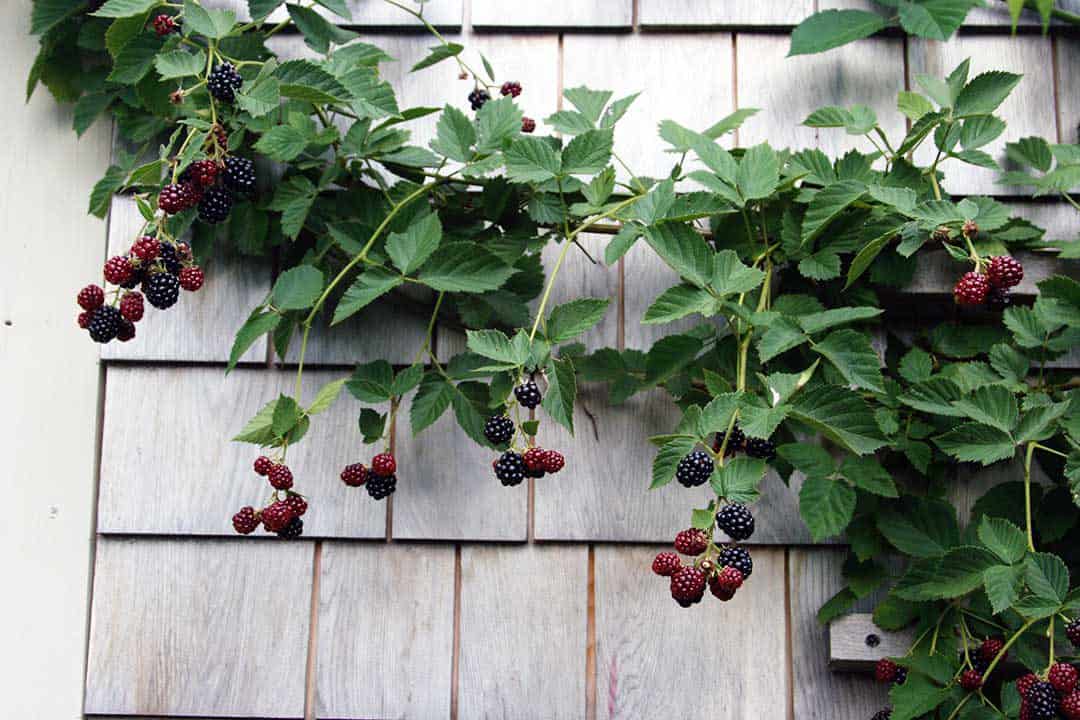Edible Landscaping, Houseplants From Supermarket Pits, and Primroses
:35 What’s For Dinner: Edible Landscaping
We discuss some of the plants that do double duty in the landscape: these are attractive and edible! The plants mentioned are: Roses, crabapple trees, plum trees, blueberries (Vaccinium corymbosum) old-fashioned quince
(Chaenomeles japonica ‘Toyo-Nishiki’), bee balm, ostrich fern (Matteuccia struthiopteris), Oregon grape (Mahonia aquifolium), potato-bean vine (Apios americana), doyle’s thornless blackberry, rainbow chard, salad greens, and nasturtiums.
10:05 The Plant Noob: Buying Plants in 6 packs vs. 4” Pots
Those new to planting often wonder why some plants are sold in inexpensive six packs, while others are only available in small pots. Ellen and C.L. explain.
14:15 Eat/Drink/Grow: Growing Plants From Pits and Leftovers
Have you ever wondered if you can grow an apple or orange tree from the pit of the fruit you bought in the store? And how about making a houseplant from the top of a pineapple or the seed from an avocado?
21:25 Insider Information: Those Cheerful Supermarket Primroses…
They have round flowers in bright colors and make us believe that spring is, indeed, just around the corner. Ellen and C.L. talk about whether you can plant these outside once the warmer weather actually arrives.
29:00 Love Letters and Questions: Soil Treatments
Is it possible to treat the soil to get rid of all your insect and disease problems?

This is a Doyle’s Thornless Blackberry, grown on the western side of my shed. Use a thornless blackberry on an arbor or trellis that you might otherwise use a climbing rose. The canes of this blackberry grow 10 to 15 feet long so provide a suitable support.

Wondering if you can grow a lemon, lime or other citrus from a seed and have it as a houseplant? The answer is yes…maybe.

They are like the flowers we doodle…an almost imaginary perfect bloom that you might find on fwallpaper or fabric. The yellow ones are usually sweetly fragrant too!

This small box of the promise of spring contains a pink primrose. After three or four weeks it will be time to separate these plants, give each its own pot, and grow them as houseplants. The primrose is unlikely to be very long lasting however.

I believe this is the correct podcast. But you mentioned that you could grow a pineapple from a pineapple top, but not bring it to fruit. I wish to correct you. Maybe in the far north you cannot, but in the deep south, we do this often.
It does take patience and a bit of trickery. The Pineapple needs to be 3 or 4 years old, have a great deal of hot sun for the first few years. When it’s time to make fruit, you put an apple in with it and it will bloom and bear a pineapple.
I have actually done this. I have a photo but do not see on this email how I can share it. Linda Shaw
Charleston S.C.
Linda,
How nice of you to respond with your experience! You’re right that in warmer places it might be possible to have a pineapple plant fruit because of the long, warm season. We were discussing it as a houseplant in most of the country where the seasons aren’t as hot or long for outdoor growth. How many years did you grow your pineapple plant?
So interesting, Linda! It must be your southern light and heat. When I lived in NYC, I grew a pineapple top in a client’s greenhouse for four years and it never produced a fruit, despite the heat and light. Did you move yours outdoors in summer?